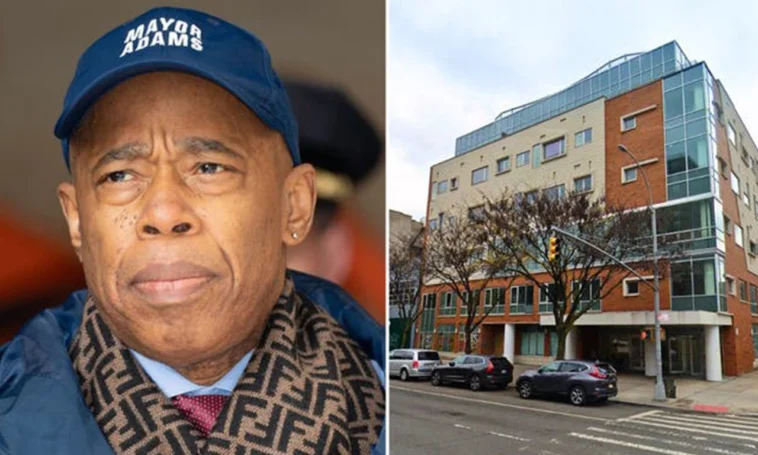The abandoned complex, situated in Central Harlem, became a contentious focal point, sparking a heated dialogue about resource allocation, community engagement, and the broader challenges facing low-income neighborhoods in the city.
Central Harlem, characterized by its predominantly Black population, with approximately 44% of residents identifying as such, is no stranger to economic hardships. The 2020 census revealed a 28.4% poverty rate in the area, significantly higher than the citywide average of 18.0%. Against this backdrop, the proposal to repurpose a luxury apartment complex for illegal migrants drew sharp criticism from the community.
During a community meeting, residents expressed their discontent with signs questioning the prioritization of resources for migrants over local youth programs. The sentiment was clear: residents felt overlooked and disrespected.
This sentiment was echoed by Regina Smith, a Harlem resident, who articulated concerns about the increasing number of homeless shelters in the community. Smith emphasized the broader issue of residents being priced out of their neighborhoods, adding to the strain felt by those already grappling with economic challenges.
As tensions mounted, Mayor Adams took the unusual step of attending the meeting to address the community directly. The residents, however, were not in a conciliatory mood. One resident bluntly told the mayor, “You are the mayor. We do not want to hear excuses.” The confrontational atmosphere highlighted the palpable frustration among residents who felt their concerns were not being adequately addressed.
In response, Mayor Adams attempted to clarify the situation, assuring the community that the abandoned luxury complex would not be utilized to house illegal migrants. Instead, he stated that the building would serve as a shelter for local homeless New Yorkers.
Adams emphasized his commitment to meeting the long-term needs of the community, recognizing the existing challenges faced by residents.
“I told the team, ‘Find out what’s going on here,'” Adams explained. “We’re not moving folks into a brand new building when you have long-term needs in a community. That’s not going to happen. You will not have migrants and asylum seekers in that property.”
While the mayor’s reassurance may have quelled concerns about the specific use of the luxury complex, the broader issues of housing affordability, homelessness, and community engagement lingered. Leslie Johnson, another Harlem resident, expressed a desire for the abandoned luxury apartments to be repurposed for affordable housing, addressing a critical need within the community.
The debate in Harlem encapsulates larger urban challenges faced by cities like New York – how to strike a balance between addressing the pressing needs of vulnerable populations, including migrants and the homeless while ensuring that local communities are actively involved in decision-making processes.
The clash of priorities, with signs at the meeting questioning the allocation of resources, reflects a broader dialogue about resource distribution and the perceived neglect of certain communities.
The mayor’s decision to shift the purpose of the luxury complex was a pragmatic response to the immediate concerns raised by the community. Still, it also highlighted the challenges faced by city officials in navigating the complex and often contentious intersection of housing, immigration, and community development.
READ MORE



One Comment
Leave a ReplyOne Ping
Pingback:NYC is spending $53 million on prepaid debit cards for immigrants - Hard Knock News
Join the Community and Be a Part of the Conversation
You must be logged in or registered to post a comment.